-
Posts
3,517 -
Joined
-
Last visited
-
Days Won
27
Content Type
Profiles
Forums
Blogs
Gallery
Events
Store
Posts posted by bigjarofwasps
-
-
Many thanks chaps. My concern was whether, you can conduct a search on an officer with only his collar. I assumed that the pictures must have been taken post 1902 but pre 1911. I was also concerned what the likelihood was that there might have been several officers who might have had the same collar number, if they'd been posted between divisions, during the 1902-1911 period? I wonder how quickly numbers were reissued?
0 -
-
Found this re his collar number "In December 1972 Nilsen enrolled in the Metropolitan Police, hoping to recapture the comradeship he had felt within the army. He was given number Q287, but found police life a poor substitute and was left in his own company for his off duty periods."
In 1965 Q Division was formed for the Wembley area previously divided between T and S Divisions.0 -
I was deeply disturbed to learn that the serial killer Dennis Nilsen was once a Police Constable!!! It appears he was stationed at Willesden Green. Does anyone know what collar number was? I wonder if it was used again?
It also appears that he spent 11 years as a chef in the Army Catering Corps, during this period he deployed to Aden. I have found a picture of him in his police uniform and it would seem that he has one medal ribbon, which I am assuming is the General Service Medal, with the clasp South Arabia. I wonder what ever happened to it? How creepy would it be to discover you had this one in your collection!!!!
0 -
3 hours ago, peter monahan said:
Thanks, dave, for that info. Given the political situation in Palestine, and the British Imperial tradition of 'police forces' who were actually soldiers, I think it a safe bet that many if not most of the Palestine Police were ex-Army.
Many thanks Peter.
0 -
19 hours ago, peter monahan said:
The information on Richards suggest what I would have supposed, that most of th 'British Constables' were ex-military. The Police Mobile Force established in 1944 was made up of British servicemen and the whole force was made laibel for military service during WWII, which argues military rather than police origins, IMO.
It was very much a paramilitary force and previous service and hence 'reliability' were probably more important than extensive police experience. It's also likely the case that not a lot of British coppers would have been lining up for work out there, for various reasons and ex-servicemen have always provided a ready pool of 'good men' in the far reches of the Empire!
My tuppence worth.
Peter
Thanks Peter, I think you might be right. From what little information I've been able to ascertain on them, they appear to be a police force in the loosest possible sense on the term and were more readily a military force as you have suggested.
On 2/4/2016 at 09:46, Craig said:That's a rare group not many police got the silver jubilee medal. And for a PC rare as hens teeth
I wonder how many Silver Jubilee Medals were issued to the police? From what I've heard from military circles it was persons like the CO, RSM and the youngest solider in the regiment that were awarded one...?
0 -
Colonial Police Medal, George VI, 1st issue, for Gallantry (British Sgt. Dennis B. Richards, Palestine Police Force), India General Service Medal 1908 clasp, North West Frontier 1930-31 (Tpr., 15-19 H.); G.S.M, 2 clasps, Palestine, Palestine 1945-48 (1127 T/2/B/Sjt. Pal. Police). Colonial Police Medal for Gallantry was published London Gazette 30 December 1947. Dennis Baily Richards joined the Palestine Police on 15 May 1932, having previously served in the 15th/19th Hussars in India. He served in the Palestine Police until the stand down on 15 May 1948. Served as a Sergeant in the Mounted Section.
1939-45 War Medal Unnamed
General Service Medal Palestine 1945-48 2739 B. CONST. G.D.C. EVANS. PAL.POLICE.
1977 Queen’s Jubilee Medal Unnamed
Police Long Service & Good Conduct Medal (QEII) CONST. GEORGE D.C. EVANS
Original documents, photos, copy service papers.
George David Charles Evans was born in Blaenow, Monmouthshire 10 December 1926. He joined the army 1 January 1945 but was discharged 6 June to join the Palestine Police 7 June 1945. On 14 June 1946 he was in charge of a Police armoury when he issued a rifle and 10 rounds of ammunition to a fake Temporary Constable. He was fined 7 days pay and the cost of the rifle and ammunition.
24 August 1947 while on motorbike patrol he had an accident and was admitted to the Government Hospital, Jerusalem. He was reported to be seriously ill and his mother unsuccessfully applied to fly to Jerusalem to be with him. He made a full recovery and the investigation found that “B/Constable Evans was injured in the execution of his duties. That such injuries were not due to his own default. That B/C Evans suffered a fractured pelvis,”
He was discharged from the Palestine Police 21 May 1948. His discharge certificate stated “Smart, reliable and hardworking.” Another document “Constable Evans carried out his duties in a very satisfactory manner. During his service he passed the M.C. drivers test. A reliable police officer.” (He passed the Motor Cycle Test 12 September 1946.) He returned to the UK on SS Strathnaver, leaving Haifa 22 May 1948.
31 March 1950 he joined Oxford City Police
30 January 1958 he transferred to Berkshire Police. In 1977 he was awarded the Silver Jubilee Medal (Thames Valley Police). Retired 18 November 1979. His reports stated that he was “highly regarded by the younger members of the station” and that his conduct had been “Exemplary”. He died March 1993 in Metheringham, Lincolnshire.Detective Superintendent Thomas James (Tom) Wilkin. Kings Police Medal for Distinguished Service, Colonial Police Medal for Meritorious Service, General Service Medal clasp Palestine,(1936-1939), Defence Medal and War medal.
Born 1909 in Aldeborough, Suffolk, he joined the Palestine Police on 10th April, 1931 as Constable 956 and gained promotion on merit. A well respected officer, decorated for his arrest of Irgun and Stern Gang members.
0 -
.............and if this isn't confusing enough. The medals to British Constables certainly is? How on earth did he end up in the Atlantic?
646 British Constable K. Bourne, Palestine Police
and yet this chap?
434 B/CONST. J.A. McMURTRIE. PAL. POLICE
Constable McMurtrie served with the Palestine Police as a British Constable during the Palestine Emergency between 1945-48.
He is confirmed on the Roll as qualifying for the medal and clasp, which was issued to him in 1950.
The Roll also states that his service in Theatre was from 19 April 1943 - To Date.
This service means he would also be entitled to a 1939-45 Star, Africa Star, Defence Medal and War Medal for his service in Palestine during WWII.
and then there's this example found on another thread on this forum...
"B/Constable Frank WINTER - He joined the Palestine Police c. 1940, his date of discharge is not known."
0 -
-
How did the British Palestine Police work between 1936 & 1948. Where they British Bobbies seconded to the roll from the UK or where they a force in their own right?
Are there any books about them?
0 -
-
-
On 1/28/2016 at 17:00, Megan said:
In Cheshire, quite a few of our bobbies wear little enamelled pins showing the ribbons to which they are entitled. As the most common set (Golden Jubilee, Diamond Jubilee, Police LS & GC) are all symmetrical, they are quite often worn upside down, i.e. with the ribbons in reverse order!
When a fire protection officer came to visit our house, handing out smoke detectors, he had such a pin (upside down, of course). So I pulled up the relevant pages on my website and showed him how they ought to be worn

This is one of my little pet HATES!!!! You see it all the time, especially when senior officers are giving press releases on the news!!!!!
0 -
29 minutes ago, Odin Mk 3 said:
Just seen this thread has resurfaced
I have the 1902 medal to Richard Rickett (named to Ricketts) who is on that photo (middle row - fourth from left). All through his career they appear to have spelt his name wrong.
In 1902 Rickett was a PS in C Div but had previously served as a PC in X Div. He was then a Station PS in Y Div before moving back to X Div as an Inspector in June 1909.
Odin, many thanks for your reply.
Not sure if you've got a picture of him?
As best I can I've looked at all the officers medals in the photograph and other than Supt. Olive, the only one who appears to have the 1887/97 Jubilee Medal is C/Insp Parker. Can anyone tell me anything about his career?
0 -
I started this thread a good 12 or so years ago. If anyone's interest? Insp COSGROVE's trio recently sold on ebay. I have not seen or heard about any other medals to any of the men on this photograph.
George Cosgrove
Warrant #77150
Joined Met: 16/11/1892 PC319D.
Retired: 02/01/1922 as Sub Divisional Inspector.PC - 1897
Sgt - 1902
Insp. 19110 -
Very interesting group you've got there Pike!!! I for one would very much like to know more about this chap, could you share what you uncover about him? If there's an 1888 connection to Bishopsgate station (A Division), you could be sitting on a little gold mine!!!
0 -
The 1st Sussex were part of the 4th Brigade (although I can't confirm when they arrived, I have been able to confirm that the brigade remained behind in Alexandria, so he missed the Battle of Tel el-Kebir. This is somewhat confusing as my soldier doesn't appear to have arrived in Egypt until after the battle had in fact been fought? Of the 900+ medals to the 1st Sussex only 1 (a Pte) our entitled to this bar? I assume he was part of the wing that was present on the 24th July. Am I right in assuming that the 1st arrived in different ships arriving at different times?
Why didn't the Battle of Kafr-el-Dawwar merit a clasp?
0 -
Can anyone help me out, with the following. I have the service papers to a soldier who served in the 57th Regiment, from 1876 until 1881, he then appears to have been transferred to the 1st Sussex Regiment, I assume this had something to do with the Childers review in 1881. Interestingly his service papers state.......
East Indies 14th Aug 1880 until 30th June 1881
East Indies 1st July 1881 until 2nd March 1882
I can find no confirmation that either of these regiments were in the East Indies during these periods, can anyone confirm this for me?
0 -
Can anyone answer this for me?
What's a wing, when referring to an Army unit?
How did a wing of the 1st Sussex become involved in the Battle of Kafr-el-Dawwar on the 24th July 1882 - (I have a medal to this regiment, the soldiers service papers state that he left England on the 29th August 1882 arriving in Egypt on the 14th September 1882.)
Alison was reinforced on 24 July by the arrival of the Duke of Cornwall's Light Infantry, a wing of the Royal Sussex Regiment and a battery of artillery — a total of 1,108 men.
0 -
 Vaughan Bourne.........duly noted!!!!
Vaughan Bourne.........duly noted!!!!
Point taken re whistle chains and no medals for the same reason makes perfect sense, HOWEVER, in my defence the Victorians were never ones for practicality of uniforms and attire..... I mean who sends their troops to the heat of the African plains wearing thick red woollen tunics, gold braiding, etc,etc
 0
0 -
"From my own photographic references I could find virtually no images of ribbands being worn until about 1900-1905, when you suddenly get a proliferation of Boer War and similar campaign medal ribbons seen on Police officers, with the various 1902 and 1910 Coronation Medal, etc, ribbons. Prior to that (with the 1887 and 1897 medals in particular) it generally seems to be the medals themselves or nothing."
So medal ribbons prior to 1900 are out, I assume then that the below Bobby wouldn't be seen walking his beat wearing all this lot?
...........and that Colour Sergeant Vaughan wouldn't have really worn his medals when fighting off the Zulus?
0 -
Many thanks for all your replies gents!!
0 -
19 hours ago, Dave Wilkinson said:
Yes they would.
Dave.
Thanks Dave! Has anyone got any photographs of Officers doing such? I particularly interested in the 1888-1891 period.
0 -
On 10/11/2015 at 19:47, John roberts said:
I got a goc commendation for op banner tour I done in 1982 if their a badge you can wear or put something on your medal
Not that I'm aware of. Only Mentioned in dispatches and Queens Commendation have devices that go on medal ribbons.
0




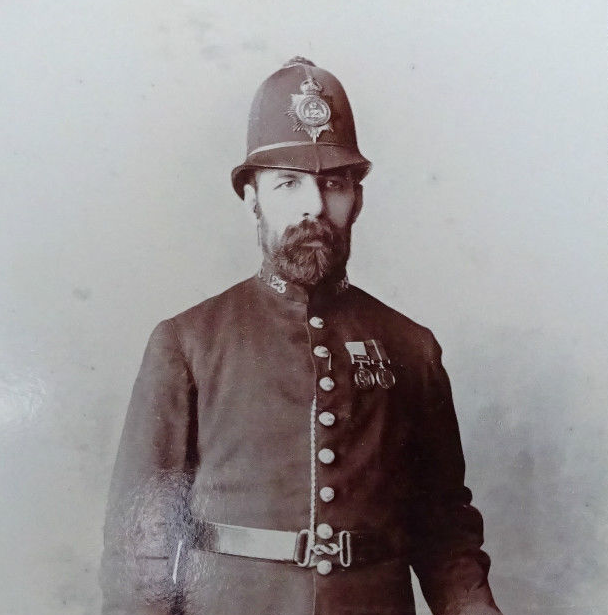
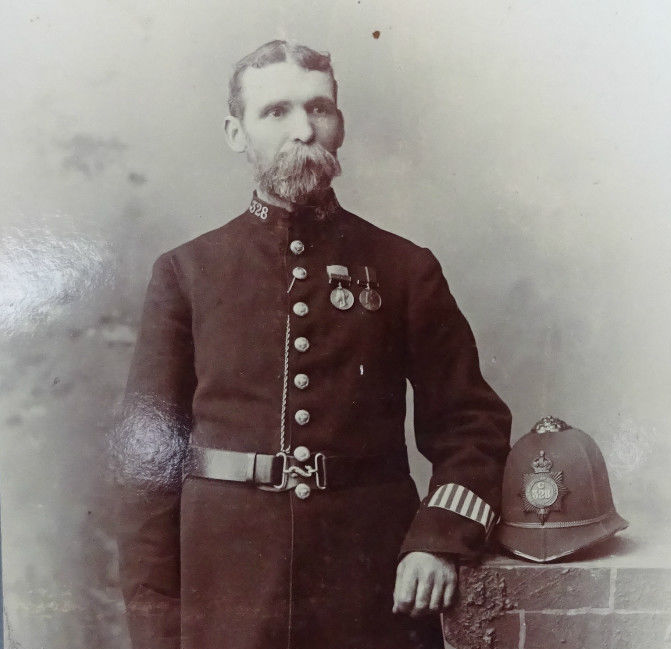
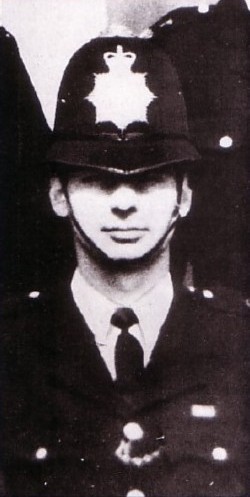
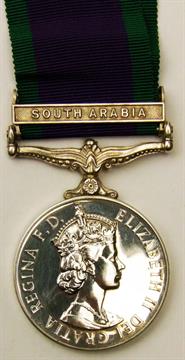


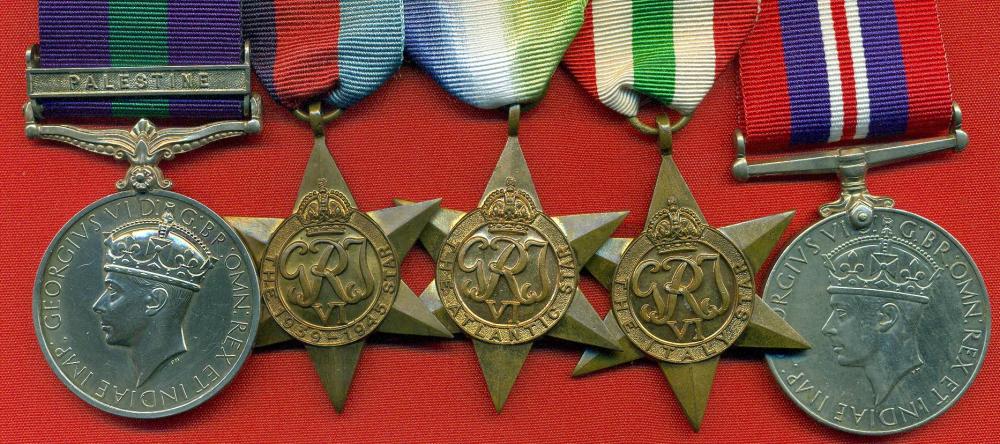
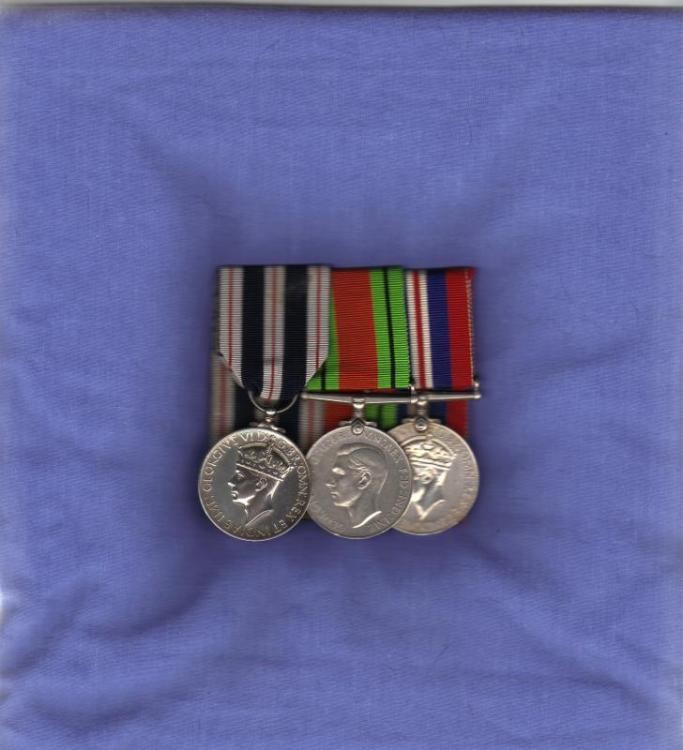


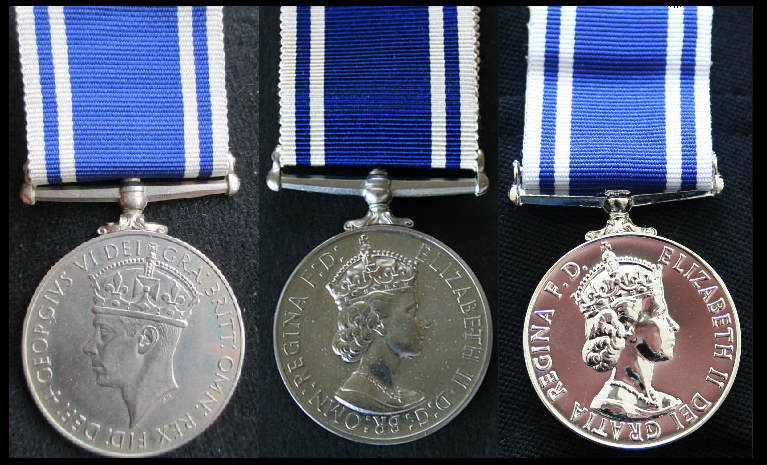
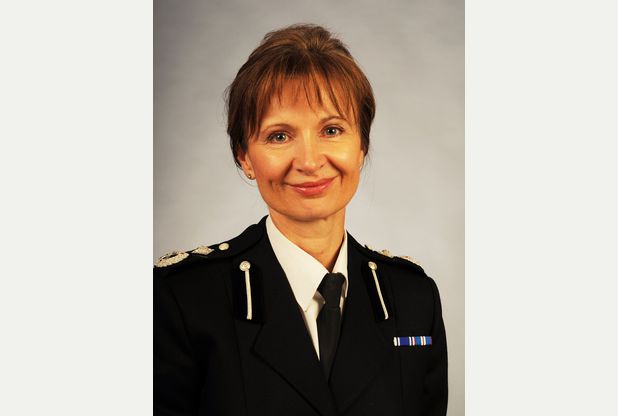
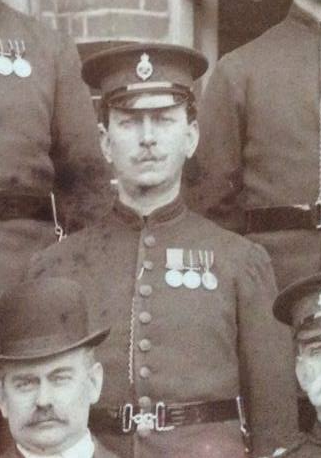
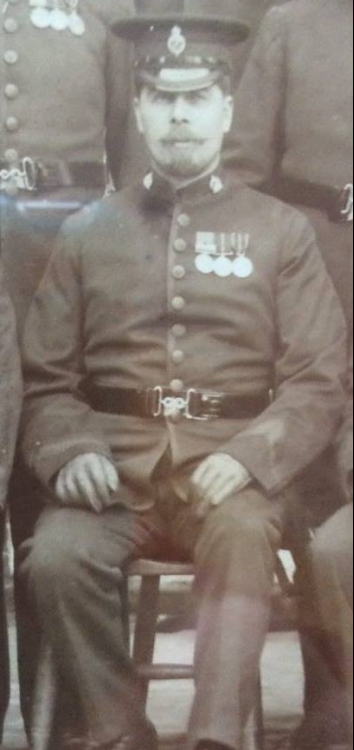
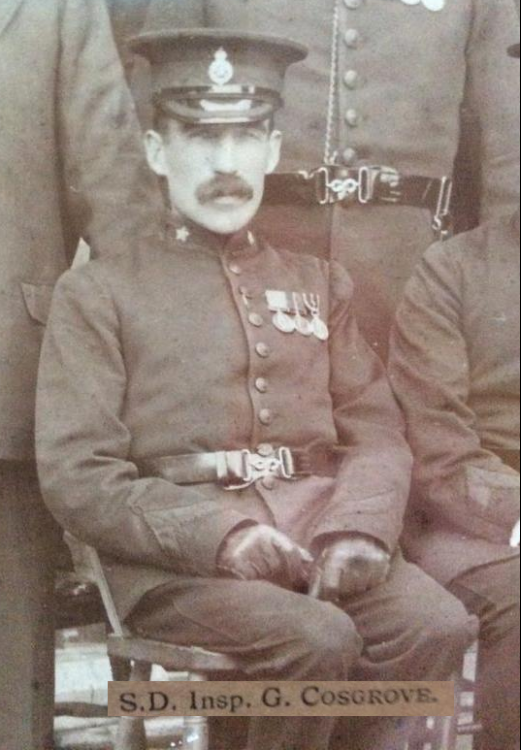
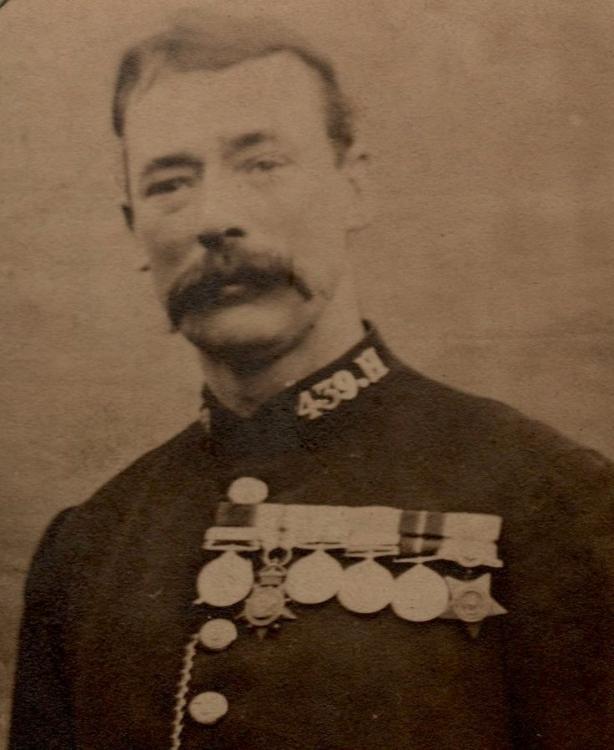
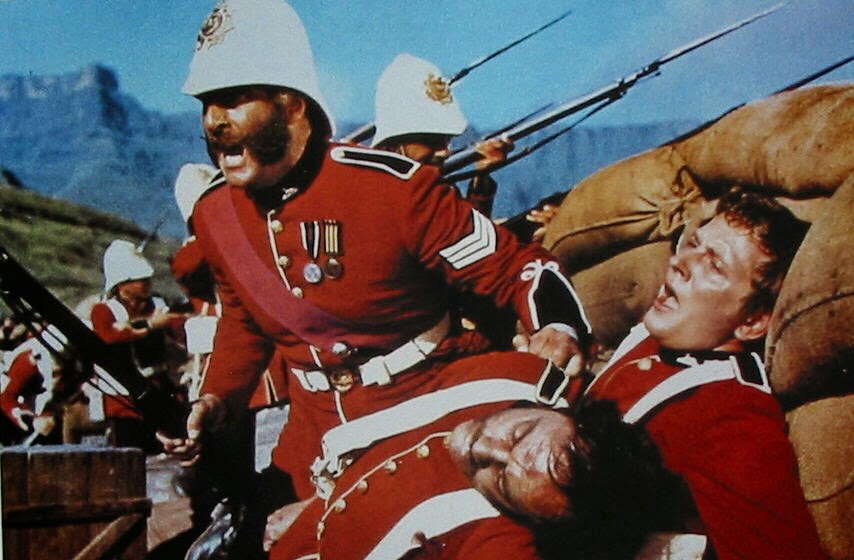
Officer portrait photographs?
in Great Britain: Mervyn Mitton's British & Colonial Police Forces
Posted
Many thanks Odin, you really are a wealth of information and for that and taking the time to do these checks, I can't thank you enough!!!!!!!!!!
I did have my concerns that it would be that easy to identify bobbies purely from collar numbers. I'm sure there must be examples when it has been possible, but on these occasions sadly not.
I would however, add that if anyone is interested in these portraits, they are currently up for auction on Ebay (not me selling them I hasten to add), they have about 5 days to run.....